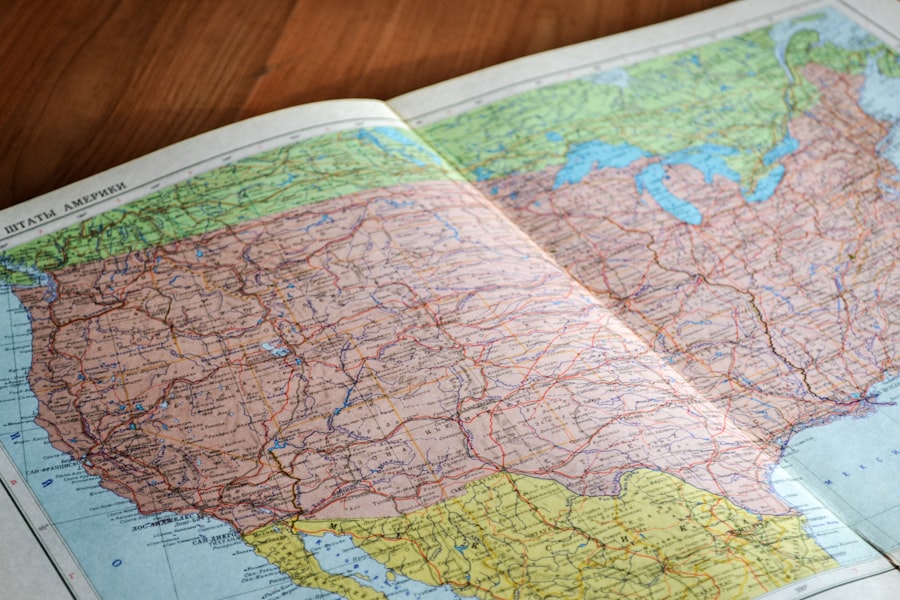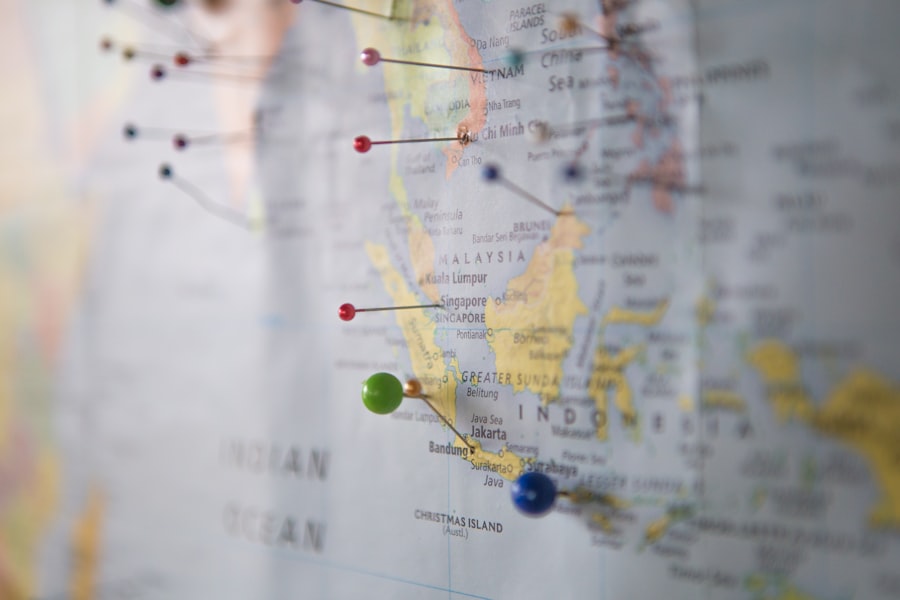Qatar, a small peninsula in the Arabian Gulf, is a sovereign state situated in the Middle East. The political boundaries of Qatar delineate its territorial limits and jurisdiction, both domestically and internationally. The nation shares a land border with Saudi Arabia to the south, whilst the remainder of its territory is encompassed by the Gulf waters.
Qatar’s political boundaries are crucial for the governance and administration of the country, as they determine the extent of its sovereignty and influence. Understanding these boundaries is essential for comprehending Qatar’s geopolitical position and the dynamics of its relationships with neighbouring states and the international community. The political boundaries of Qatar are defined not only by its physical geography but also by its legal and administrative divisions.
These boundaries are delineated by laws, treaties and agreements that Qatar has entered into with other states and international organisations. Qatar’s political boundaries play a significant role in shaping its domestic policies, economic activities and foreign relations. As such, they are a fundamental aspect of Qatar’s identity and influence in the region and beyond.
Summary
- Qatar’s political boundaries have evolved over time, shaping the country’s governance and administration.
- The provinces and districts of Qatar play a significant role in the country’s political structure and local governance.
- Historical boundaries of Qatar have been influenced by various factors, including colonialism and regional geopolitics.
- Changes in Qatar’s political boundaries over time have been driven by internal and external factors, such as territorial disputes and diplomatic negotiations.
- The impact of political boundaries on Qatar’s governance is evident in the distribution of resources, representation, and decision-making processes.
Provinces and Districts of Qatar
Qatar is divided into eight municipalities, each with its own administrative centre and local government. These municipalities are further subdivided into districts and zones, which are responsible for managing local affairs and providing public services to residents. The municipalities of Qatar are Doha, Al Rayyan, Al Wakrah, Al Khor, Umm Salal, Al Daayen, Al Shamal, and Al Sheehaniya.
Each municipality has its own unique characteristics and plays a crucial role in the governance and development of the country. The provinces and districts of Qatar are essential for the effective administration and provision of services to its population. They serve as the primary units of local government, responsible for implementing national policies and programmes at the grassroots level.
The provinces and districts of Qatar also play a vital role in promoting social cohesion and cultural diversity within the country. By recognising the distinct needs and aspirations of different communities, these administrative divisions contribute to the overall stability and prosperity of Qatar.
Historical Boundaries of Qatar

The historical boundaries of Qatar have evolved over centuries, shaped by various geopolitical, economic, and social factors. In ancient times, Qatar’s boundaries were influenced by tribal affiliations and trade routes, with the peninsula serving as a strategic hub for commerce and cultural exchange. The historical boundaries of Qatar were also influenced by the expansion of Islamic empires and the subsequent establishment of regional dynasties.
These historical developments have left a lasting impact on Qatar’s territorial limits and its sense of identity as a distinct political entity. During the colonial era, Qatar’s historical boundaries were further influenced by European powers seeking to assert their influence in the region. The Ottoman Empire and the British Empire played significant roles in shaping Qatar’s territorial limits through treaties and agreements with local rulers.
These historical boundaries have had a lasting impact on Qatar’s geopolitical position and its relationships with neighbouring states. Understanding the historical boundaries of Qatar is essential for comprehending its current political dynamics and the challenges it faces in defining its place in the modern world.
Changes in Qatar’s Political Boundaries Over Time
The political boundaries of Qatar have undergone significant changes over time, reflecting the country’s evolving relationships with neighbouring states and the international community. One of the most significant changes in Qatar’s political boundaries occurred in 1916 when the country became a British protectorate under the Anglo-Qatari Treaty. This agreement defined Qatar’s territorial limits and established its status as a distinct political entity within the British sphere of influence.
The subsequent discovery of oil in the 1930s further transformed Qatar’s political boundaries, leading to increased international attention and investment in the country’s development. In 1971, Qatar gained independence from British protection, leading to further changes in its political boundaries as it sought to assert its sovereignty on the world stage. The subsequent delineation of maritime boundaries with neighbouring states has also been a significant factor in shaping Qatar’s political boundaries.
These changes have had a profound impact on Qatar’s governance and economic development, as they have influenced its relationships with other states and international organisations. Understanding the changes in Qatar’s political boundaries over time is crucial for comprehending its current geopolitical position and future prospects.
Impact of Political Boundaries on Qatar’s Governance
The political boundaries of Qatar have a profound impact on its governance, shaping the distribution of power and resources within the country. The delineation of administrative divisions and local government units plays a crucial role in ensuring effective public administration and service delivery. The political boundaries also influence the allocation of resources and decision-making processes at both national and local levels.
As such, they are essential for maintaining social cohesion and promoting equitable development across different regions of the country. The impact of political boundaries on Qatar’s governance is also evident in its relationships with neighbouring states and international organisations. The delineation of territorial limits and maritime boundaries has significant implications for Qatar’s economic activities, particularly in relation to its natural resources and access to international markets.
The political boundaries also influence Qatar’s foreign policy priorities and diplomatic engagements, as they define the extent of its influence and responsibilities within the region and beyond. Understanding the impact of political boundaries on Qatar’s governance is essential for comprehending its domestic policies and international relations.
Challenges and Controversies Surrounding Qatar’s Political Boundaries

Despite their significance, Qatar’s political boundaries have been subject to various challenges and controversies over time. One of the most contentious issues has been the delineation of maritime boundaries with neighbouring states, particularly in relation to shared resources such as natural gas fields. Disputes over territorial limits have led to tensions and diplomatic negotiations between Qatar and its neighbours, highlighting the complexities of defining political boundaries in a region with competing interests and historical legacies.
The influx of migrant workers into Qatar has also raised concerns about the social implications of political boundaries, particularly in relation to labour rights and access to public services. The concentration of economic activities in urban centres has led to disparities in development between different regions, raising questions about the equitable distribution of resources across provincial boundaries. These challenges underscore the need for effective governance mechanisms that can address the diverse needs and aspirations of Qatar’s population within the context of its political boundaries.
Future Prospects for Qatar’s Political Boundaries
The future prospects for Qatar’s political boundaries are shaped by various geopolitical, economic, and social factors that will influence its relationships with neighbouring states and the international community. As Qatar continues to diversify its economy and assert its influence on the world stage, it will face new challenges in defining its territorial limits and maritime boundaries. The ongoing development of infrastructure and urban centres will also have implications for how political boundaries are managed and administered in order to promote sustainable development across different regions.
The future prospects for Qatar’s political boundaries also depend on its ability to address internal challenges related to social cohesion, economic disparities, and governance mechanisms. By recognising the diverse needs and aspirations of its population within the context of its political boundaries, Qatar can promote inclusive development and social stability. Furthermore, engaging in diplomatic negotiations with neighbouring states to resolve disputes over territorial limits will be crucial for maintaining regional stability and promoting cooperation in shared resource management.
Overall, understanding the future prospects for Qatar’s political boundaries is essential for comprehending its evolving role in the Middle East and beyond.
FAQs
What are the political boundaries of Qatar?
The political boundaries of Qatar are divided into municipalities, which are further divided into zones and districts.
How many municipalities are there in Qatar?
There are a total of 8 municipalities in Qatar, namely Al Shamal, Al Khor, Umm Salal, Al Daayen, Al Rayyan, Al Wakrah, Al Shahaniya, and Doha.
What are the historical boundaries of Qatar?
The historical boundaries of Qatar have evolved over time, with the country being divided into various regions and territories under different ruling powers. However, the modern political boundaries of Qatar are based on the administrative divisions established by the government.
Are there any provinces in Qatar?
Qatar does not have provinces. The administrative divisions in Qatar are based on municipalities, zones, and districts.
How are the political boundaries of Qatar managed?
The political boundaries of Qatar are managed by the Ministry of Municipality and Environment, which oversees the administration and development of the municipalities, zones, and districts in the country.


